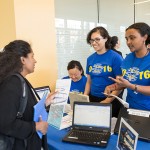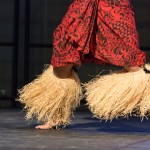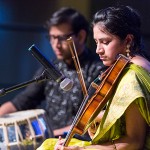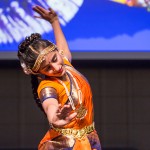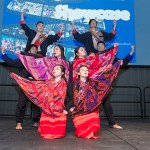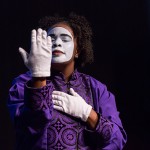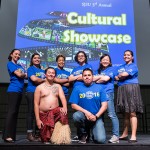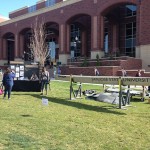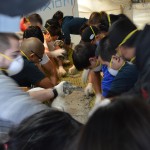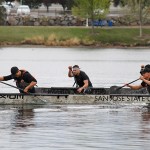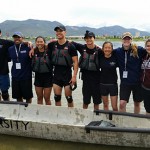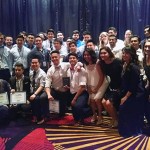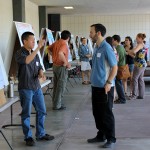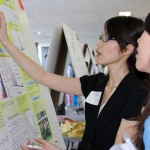By Lauren Hernandez, ’15 Journalism
The pounding of conga drums married with the seductive blare of the trumpet filled the Student Union Ballroom as part of the second annual Essence of Blackness event.
The African American Student Success Task Force hosted the event along with its Harambee Committee to explore just one influence of African culture on the world by focusing on jazz music and its rich, diverse history in the United States and beyond.
“Harambee, the arm of the task force that sponsors these kinds of events, brings together not only the African American students, faculty and staff but also reaches out to the larger campus to participate in cultural events,” said Michelle Randle, director of the CASA Student Success Center and chair of the Harambee committee. “And [also it is important] for the African American students to see the support that they actually have on campus beyond themselves.”
The Essence of Blackness theme was born last year following conversations with African American students regarding the type of educational programming they felt was necessary to share with the campus community.
“I do think young people now are not exposed to jazz and do not always understand that its origins do come from Africa and this country,” Randle said.
Charlie Channel, of the Charlie Channel Quartet, lectured attendees on the history of jazz before delving into a traditional jazz performance.
Channel read Langston Hughes’ poem titled “Drums,” which represents the origin of jazz by chronicling the movement of slaves from Africa while describing the survival and re-emergence of the drums into new lands.
“When you think about slavery and tribes of people who were thrown together, who didn’t know each other, the oppression, the brutality, there was just one thing they had in common — it was the drum,” Channel said. “Ultimately, it resulted in this new form of music that had never been heard before on the planet called ‘jazz’.”
The genre’s diversity was introduced to attendees by Brian Andres, the drum set and leader of the Brian Andres & the Afro-Cuban Jazz Cartel. He discussed how the music evolved in the United States with the help of Mario Bauza, a Cuban clarinetist who played a role in launching the Afro-Cuban jazz movement during the Harlem Renaissance.
Some attendees leaped to their feet and danced as Andres and his band’s upbeat conga drumming and lively trumpeting reverberated throughout the ballroom. Others indulged in Walia Ethiopian, Caribbean and American soul-food cuisine.
This year’s event included the Harambee Awards and commemorative clocks were given to individuals in the campus community who have served and shown commitment to the success of African American students.
Six members of the administration, four students and two community members were awarded recognition and two students were given special recognition for their “Strength in the Face of Adversity.”
Gary Daniels, a Harambee awardee, said although he is thankful for the recognition, he is not a student activist to gain accolades.
“Young people should use their talents and energy to make the world a better place regardless of whether they get awarded or recognized,” Daniels said.
Jerusalem Bekele, ’17 Kinesiology and fellow Harambee awardee, said events such as Essence of Blackness are essential to educating the campus community about various cultures and the origin of traditions, but also to building a sense of community.
“Our perspective is kind of limited to what’s in front of us, and not necessarily outside so events like this kind of reach outside of America,” Bekele said. “I think it introduces a lot of culture and tradition to the SJSU community as well.”
Donntay Moore-Thomas, ’17 Communications Studies, said although it was nice to see familiar faces that comprise the three percent African American population at SJSU, she was thrilled to see people from other cultural backgrounds attend as well.
“If we can share a meal together, I feel that we can come together for a greater cause,” Moore-Thomas said.
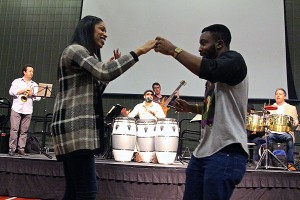
Photo by Lauren Hernandez
Guests dance to a jazz band at the Essence of Blackness event hosted by the African American Student Success Task Force Harambee Committee in April.
